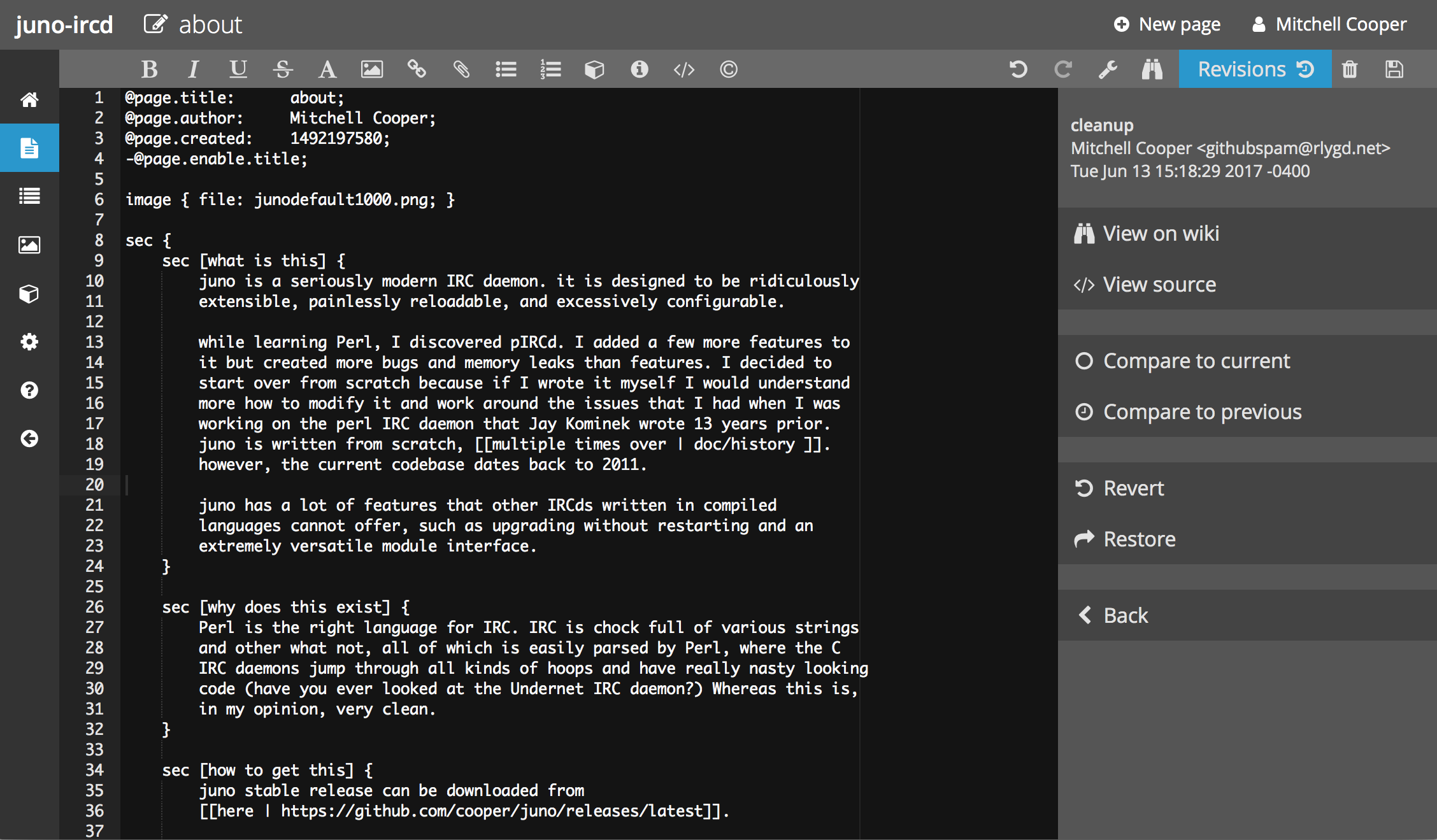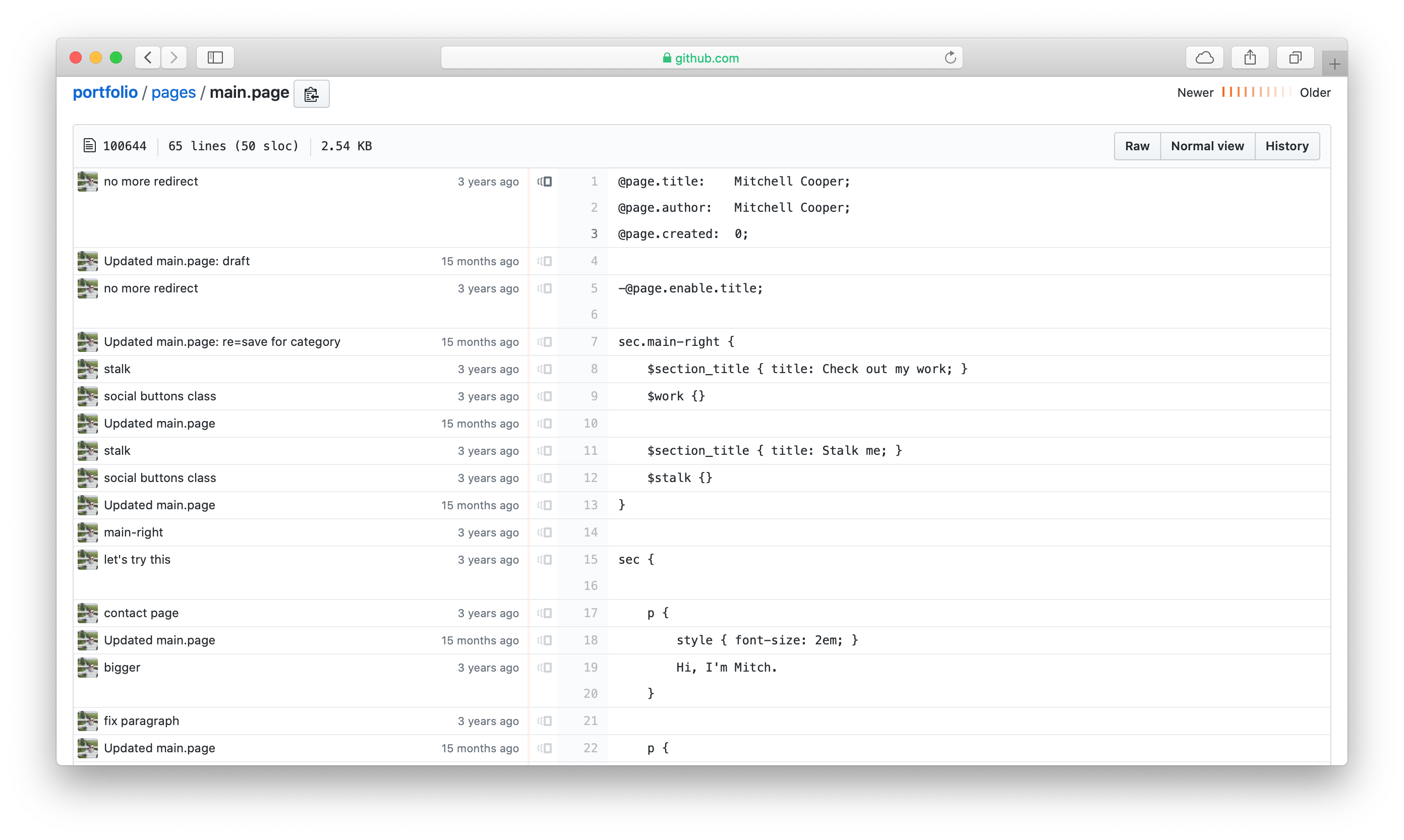Clean. Productive. Clear.
Anyone can read it. Anyone can write it. That's the goal of the quiki source language. I like to think of it as a better structured, more extensible alternative to Markdown; but if you like Markdown more, not to worry—quiki serves those files too.
Learn to speak quiki
Ditch the database.
quiki started as a simple script to convert plain text files to HTML and CSS. Through its evolution into a featureful, ready-from-the-box web engine, its backbones remain true to those humble beginnings—a quiki website can be easily read and written in even the most unsophisticated of text editors.
See how content is stored
Do web work, on the web.
With the built-in adminifier web panel, your sites can be configured and edited right in the browser. That makes quiki great for all sorts of applications, even blogs whose writers might not have the technical know-how to access a text-based editor on the server command line.
About adminifier
Draft and redraft.
The nice thing about using plain text files is that amazing tools just so happen to already exist for the revision tracking of such files. Each quiki website is a git repository. Use branches to draft and preview pages before merging them in for public view. All of this and more in your browser or terminal.
About quiki + git
Let your servers gossip.
What is told in the ear of a man is often heard 100 miles away. The same is true with quiki. It's a new kind of load balancing, one that pretty much takes care of itself. Kindly introduce a few quiki servers and leave them to the talking. They'll keep each other in the know about juicy new content and fetch the latest right away.
About Gossip
It's all one piece.
No dependencies. No confusing setup. There is but one moving part, and that part can move just about anywhere. That's the glory of being written in Go: the entire quiki suite is compiled into one self-contained, ultra portable binary that ships with a working configuration.
Get started